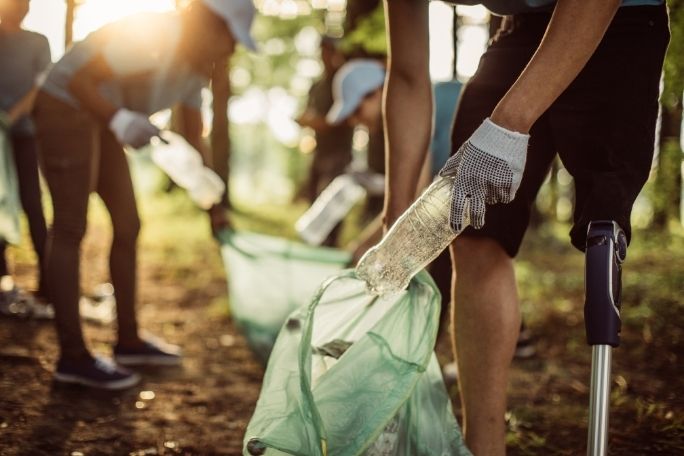Lesson summary
The Enviroweek Waste Warrior Challenge encourages students to explore their day-to-day wastage and make better choices. This resource is structured in three parts – each being an individual activity.
Part 1 – Tune In: Students explore renewable and non-renewable resources and take responsibility for limiting and considering the environmental impact of unwanted food packaging.
Part 2 – Act: Students plan and develop their own Waste Warrior Challenge.
Part 3 – Share: Students share their experiences and inspire others to take action.
Learning intentions:
Students will...
- understand the impact of waste on our environment
- recognise the impact of plastic and plastic bags on our environment
- collect data about the school’s renewable and non-renewable waste management system
- rethink their waste management practices and take action to reduce wastage personally.
Lesson guides and printables
Lesson details
Curriculum mapping
Australian curriculum content descriptions:
Year 7 Science:
- Some of Earth’s resources are renewable, but others are non-renewable (ACSSU116)
- Science and technology contribute to finding solutions to a range of contemporary issues; these solutions may impact on other areas of society and involve ethical considerations (ACSHE120)
Year 8 Science:
- Science and technology contribute to finding solutions to a range of contemporary issues; these solutions may impact on other areas of society and involve ethical considerations (ACSHE135)
Year 9 Science:
- People can use scientific knowledge to evaluate whether they should accept claims, explanations or predictions (ACSHE160)
Year 10 Science:
- Critically analyse the validity of information in secondary sources and evaluate the approaches used to solve problems (ACSIS206)
- Communicate scientific ideas and information for a particular purpose, including constructing evidence-based arguments and using appropriate scientific language, conventions and representations (ACSIS208)
Syllabus outcomes: SC4-11PW, SC5-13ES, SC5-7WS, SC5-8WS, SC4-12ES.
General capabilities: Literacy, Critical and Creative thinking.
Cross-curriculum priorities: Sustainability OI.8.
Resources required
- Internet access
- Student Worksheet
- Prior to the ‘Tune In’ activity, collect a range of plastic bags to bring into class
- You may need other resources depending on the challenge the students choose to do
Additional info
This is an original Cool.org lesson. Facts and figures in these lessons may have changed since this lesson was published. We always endeavour to update our resources in a timely manner, but if you see an error or issue in our resources please get in touch with us.


Welcome back!
Don't have an account yet?
Log in with:
By signing up to Cool.org you consent and agree to Cool's privacy policy to
store, manage and process your personal information. To read more, please see
our privacy policy here(Opens in new tab).
Create your free Cool.org account.
Many of our resources are free, with an option to upgrade to Cool+ for premium content.
Already have an account?
Sign up with:
By signing up to Cool.org you consent and agree to Cool's privacy policy to
store, manage and process your personal information. To read more, please see
our privacy policy here(Opens in new tab).